Confronting the overlooked facets of child abuse

I was barely seven years old. A group of kids around my age lived in our building, and we often played together in the afternoons. We enjoyed many games—hopscotch (locally known as Kutkut), freeze tag (borof pani), and hide and seek. Among them all, I dreaded playing hide and seek. The boy I frequently teamed up with had a different variation of the game. It involved hiding under the bed or in the bathroom and complying with his requests to take off my pants. At that age, my caregivers hadn't taught me about "good touch" or "bad touch." But every fibre of my being screamed that this was wrong, and the discomfort I felt was overwhelming and impossible to ignore.
After a while, I started making excuses not to participate in any games with my neighbours' kids, whether outdoors or indoors. I began throwing tantrums every time my younger sister (who is three years my junior) visited our neighbour's house. It was my way of trying to protect her.
I became isolated, spending my afternoons watching passersby from our balcony instead of mingling with other kids or participating in any activities. Eventually, my mother noticed my unusual behaviour and resistance to visiting our neighbour's house. She patiently asked me for details and immediately informed the other neighbours. It was terrifying to learn that my other playmates had also suffered similar abuses while playing with the boy in question. Notably, he was our age—a child himself—re-enacting actions he had merely witnessed at his household (as he confessed upon questioning).
Who do I blame for the traumatic experiences that robbed me of my childhood? My abuser was also a child, after all, who probably had no clue what he was doing. Even today, when my mother talks about my childhood, she says I was never like other kids and loved reading instead of playing. But the reality is—I did want to play, like other kids, but I didn't feel safe anymore.
My personal account somewhat reflects the complex reality of child-on-child sexual abuse, a subset of the broader child sexual abuse epidemic that plagues Bangladesh and many parts of the world. It raises difficult questions: how do we address situations where both victim and perpetrator are children? How can we protect all children while recognising that young abusers may themselves be victims of witnessed or experienced abuse?
Sexual violence against children often occurs at the hands of someone familiar to the victim, including when the perpetrator is another child. This can involve siblings, neighbours, cousins, or peers from various social settings such as sports teams, youth groups, schools, religious organisations, gangs, or even within care facilities. The abusing child may have learned such behaviour from an abusive adult, either through direct exposure or via the internet. However, understanding the source of the abusive behaviour, while important for prevention, does little to alleviate the immediate suffering of the victimised child or their long-term trauma.
From the victim's perspective, if an experience felt abusive, it should be treated as such. This doesn't mean that every uncomfortable interaction was intentionally abusive, as children can sometimes misinterpret well-intentioned boundary-setting. However, when it comes to sexual abuse, the emotional impact on the child is more crucial than the perpetrator's intent. While persistent abuse can significantly affect a child's emotional and cognitive development, even a single incident of sexual abuse can have a serious and long-lasting impact.
The prevalence of child abuse in Bangladesh is staggering. A 2017 study found that approximately 99 percent of children aged 11–17 had experienced at least one form of child physical abuse (CPA) in their lifetime, 95 percent experienced two or more forms and 83 percent experienced three or more forms of CPA. In the year preceding the study, 93 percent experienced at least one form, 79 percent experienced two or more forms, and 57 percent experienced three or more forms of CPA. Female children faced more severe forms of abuse than males, yet this statistic likely underestimates male victimisation due to underreporting.
The study identified several risk factors for frequent CPA, including being male, younger age, witnessing adults using weapons at home, being bullied by siblings, and low levels of maternal education. For two or more forms of frequent CPA, an additional risk factor was adults shouting in a frightening way.
Recent UNICEF data from 2024 paints an even grimmer picture: 9 out of 10 children aged 1–14 years in Bangladesh face violent discipline monthly by caregivers, affecting over 45 million children. In just the first half of 2024, at least 392 children were reported victims of violence and abuse, with 126 cases involving children aged 7–12.
According to Ain O Salish Kendra (ASK) data, a human rights organisation, 463 children were subjected to various forms of violence and abuse only during the first seven months of this year (January-July). Of which, merely 256 cases were filed.
While awareness around protecting female children has grown, we must ask: are we equally vigilant about our male children? The reality is that boys and men suffer the negative consequences of childhood sexual abuse to the same, and sometimes greater, extent as girls and women. Yet, they face unique challenges that often lead to underreporting and delayed disclosure.
The scope of male child victimisation is alarming. According to ASK data, during the first three months at least 75 children were victims of rape, including boys. In 2021, at least 31 cases of rape of minor boys (aged between seven and 18) were reported. However, legal protections for male victims remain inadequate, especially for those over 16.
It is crucial to note that male children are not even safe in educational institutions. In 2018 alone, at least 42 cases of brutal punishment and sexual abuse in madrasas were reported in the media. In 2021, around 30 incidents of sexual violence in Qawmi madrasas were reported. These numbers likely represent only a fraction of actual occurrences, highlighting the urgent need for better oversight and comprehensive child protection measures in every social and household setting, including educational institutions.
The conflict between masculine identities and the experience of sexual victimisation can silence male survivors. This silence is reflected in intervention studies, where boys and men are disproportionately underrepresented. To truly address this issue, we must encourage open dialogue and create safe spaces for male victims to come forward without fear of stigma or disbelief.
Family dynamics in these situations can be quite complex, and it's common to hear that the child who was abused wasn't taken seriously. This dismissive response can occur even when the abuse is disclosed years later in adulthood. Often, caregivers may find it easier to downplay the severity of the issue, either by believing the abuser's denial or claiming that nothing serious occurred. For the person who suffered the abuse, this disbelief can feel like a re-victimisation, even when it happens long after the fact. Without open and honest discussions, family gatherings can become uncomfortable for the survivor, straining relationships. The individual may feel pressured to ignore the past or simply "move on" to maintain family bond.
The legal landscape in Bangladesh further complicates the issue. Conflicting definitions of "child" in different laws create confusion and potential loopholes. The Prevention of Violence Against Women and Children Act 2000 defines a child as under 16, while the Children Act 2013 sets the age at 18. This discrepancy can lead to inadequate protection for victims aged 16–18, particularly male victims who may fall outside the scope of certain protections.
To address these challenges, Bangladesh needs comprehensive legal reform. Laws should be harmonised to provide consistent protection for all children up to 18 years old and be gender-neutral to ensure equal protection for all victims. Establishing child-friendly reporting mechanisms and support services is crucial, as is the proposed National Child Rights Commission to monitor and address child abuse cases.
Public education campaigns are essential to raise awareness among parents, teachers, and children about consent, appropriate boundaries, and the impacts of violence. These should target all genders equally and aim to change societal attitudes that perpetuate abuse and silence victims.
It's essential to recognise that all forms of sexual abuse are serious. However, it's equally important to understand that healing is possible. With appropriate support and intervention, adult survivors can work through their experiences and find resolution, regardless of the nature or duration of the abuse they endured.
As we work towards solutions, we must remember the human impact of these statistics. Each number represents a child like myself, whose childhood was irrevocably altered by abuse. The isolation I felt, watching passersby from our balcony instead of playing with other children, is a fate no child should endure. By addressing this issue comprehensively—considering all victims regardless of gender, tackling institutional abuse, and creating a culture of open dialogue and support—we can hope to create a safer world for all children.
The journey to healing and prevention is long, but it begins with acknowledgement, education, and action. As a society, we must confront this silent epidemic head-on, ensuring that no child's story goes unheard and no victim remains unsupported. Only then can we truly protect the innocence and potential of every child, regardless of gender, institution, or circumstance.
Mahiya Tabassum is a journalist at The Daily Star.
Views expressed in this article are the author's own.
Follow The Daily Star Opinion on Facebook for the latest opinions, commentaries and analyses by experts and professionals. To contribute your article or letter to The Daily Star Opinion, see our guidelines for submission.

 For all latest news, follow The Daily Star's Google News channel.
For all latest news, follow The Daily Star's Google News channel. 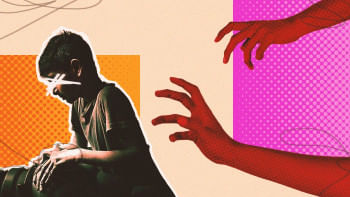

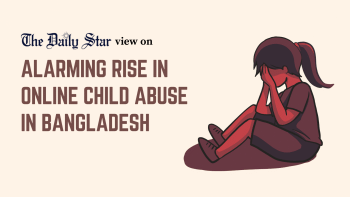



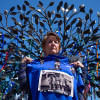

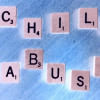
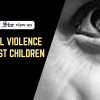


Comments